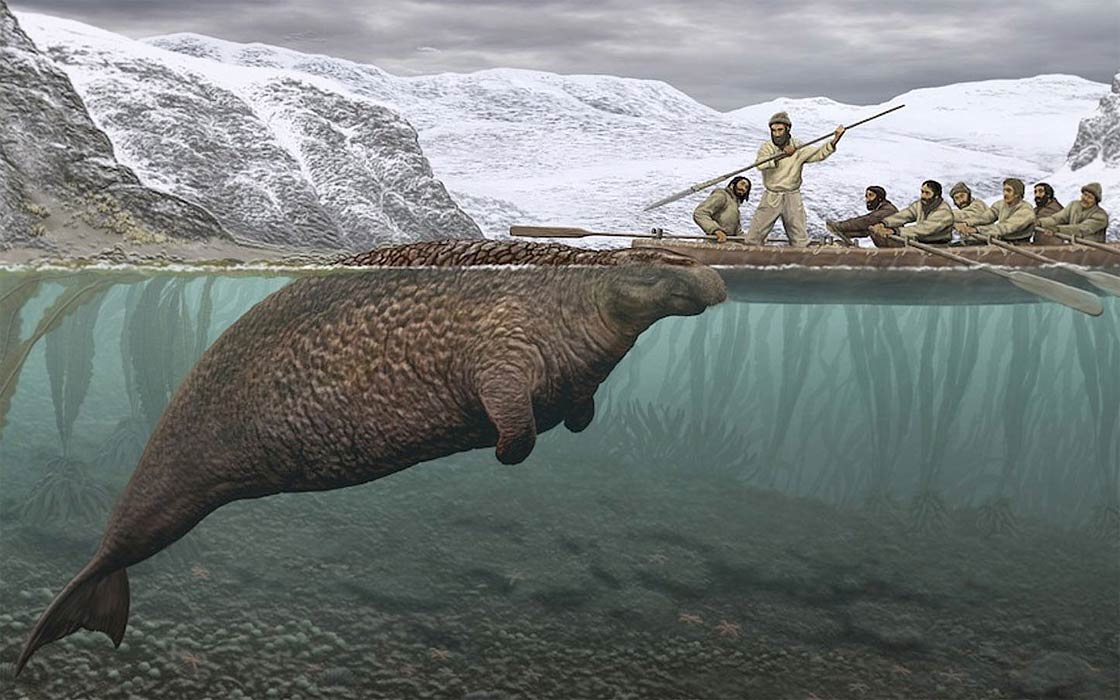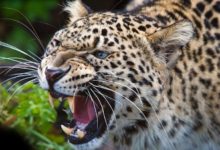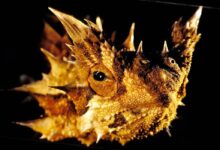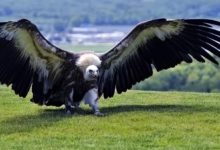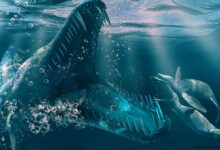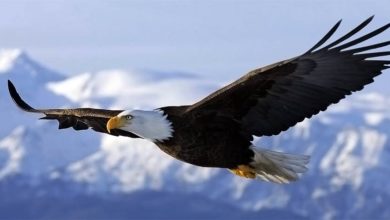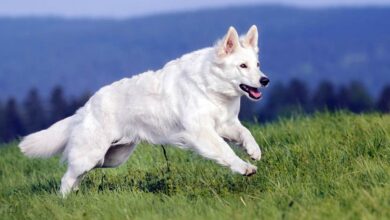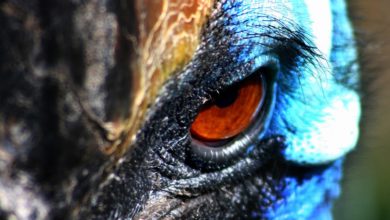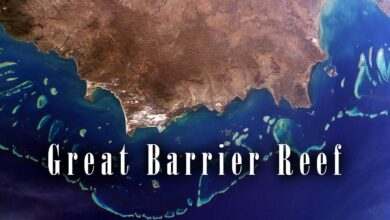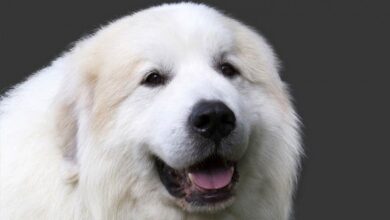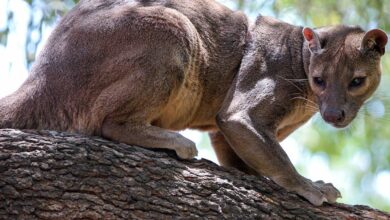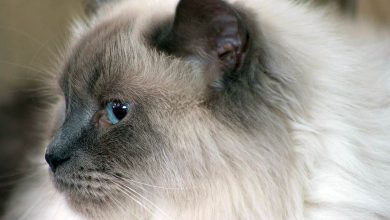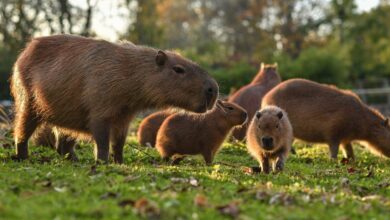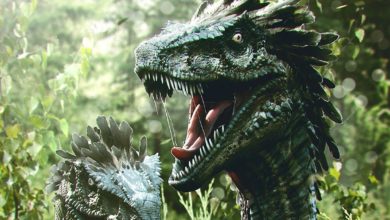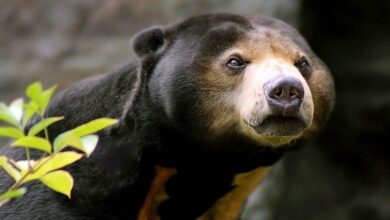Steller’s sea cow
Steller’s sea cow (Hydrodamalis gigas) was a species of large marine mammal that was native to the coastal waters of the North Pacific. It was a relative of the dugong and the manatee and was the largest known species of Sirenian, growing up to 30 feet in length and weighing as much as 10 tons. It had thick, dark-brown skin and a small head with a pair of small eyes and ears. It had two front flippers and a broad, flat tail that it used for propulsion. The sea cows fed on a diet of kelp, lived in small family groups and were known to be slow-moving and docile animals. Unfortunately, the species went extinct in the 18th century after only 27 years of being discovered by Europeans, due mostly to hunting by sailors and fur traders.
Classification
Steller’s sea cow (Hydrodamalis gigas) is a species of marine mammal that belonged to the order Sirenia, which includes dugongs and manatees. Sirenia is a group of mammals that are characterized by their flippers and paddle-like tails, which are adapted for life in the water.
Within Sirenia, Steller’s sea cow is considered to be most closely related to the dugong, and together with the manatees, form the family Trichechidae. Steller’s sea cow is the only known species in the genus Hydrodamalis.
Taxonomy
- Kingdom: Animalia
- Phylum: Chordata
- Class: Mammalia
- Order: Sirenia
- Family: Dugongidae
- Genus: †Hydrodamalis
- Species: †Hydrodamalis gigas
It is important to note that the classification of the animal kingdom is always subject to change as scientists keep discovering new information and using new techniques to understand the evolutionary relationships among different organisms. So, even though the current classification indicates that Steller’s sea cow is closely related to the Dugong and Manatees, new findings in the future might change this relationship, and it might be classified under a different genus or family.

Steller’s sea cow Scientific Name
The scientific name of Steller’s sea cow is Hydrodamalis gigas. The genus name Hydrodamalis derives from the Greek words “hydro” meaning “water” and “damalis” meaning “calf”, reflecting its marine mammal characteristics. The species name gigas is also from Greek, meaning “giant”, reflecting its large size.
The scientific name was established by Georg Wilhelm Steller, who was the first to describe it scientifically in 1741.
Ecology and Behavior
Steller’s sea cow was a slow-moving and docile animal that lived in small family groups. They were found in the coastal waters of the North Pacific, and their diet consisted primarily of kelp. They were known to be bottom-feeders and would use their large, prehensile upper lip to gather and eat the kelp.
These animals were known to be active during the day and would often be found close to shore, where kelp beds were more abundant. They were believed to have a home range of around 20 square kilometers and move slowly through the water using their broad, flat tail for propulsion.
They were also known to have a good memory and they have been observed to have a strong social bond, they usually move in pairs or small family groups, and even when they were hunted they stayed close to each other, they didn’t flee far away. The breeding biology of this species is not well understood, but it is thought that they may have had a single calf at a time and had a long gestational period, possibly over a year.
Unfortunately, this species went extinct shortly after being discovered by Europeans, due mostly to hunting by sailors and fur traders for their meat and for the oil in their fat. This hunting pressure was intense and relentless, as the animals were slow-moving, easy to catch, and lived in shallow waters, which resulted in the complete extinction of the species within 27 years of their discovery.
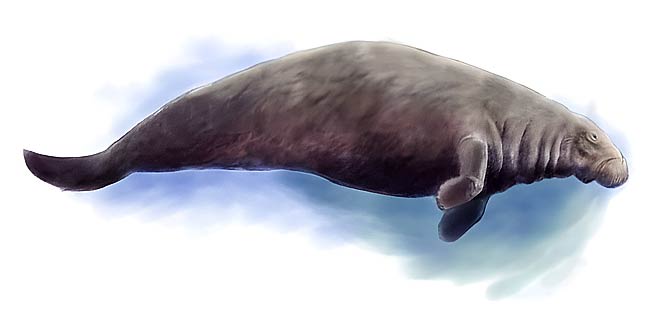
Steller’s sea cow Diet
Steller’s sea cow was a herbivore and its diet primarily consisted of kelp. Kelp is a type of large seaweed that grows in shallow, coastal waters, and it was an abundant food source for the sea cow in its habitat. The sea cow would use its large, prehensile upper lip to gather and eat the kelp. They were known to be bottom-feeders, they would mostly feed on the forest floor of the kelp beds, and they were reported to be able to eat up to 100 pounds of kelp per day.
They would also feed on other types of seaweed such as eelgrass, rockweed, and some species of sea urchins. The sea cow’s diet was an important part of its habitat and ecology, as their foraging and feeding behaviors had a direct impact on the distribution, growth and productivity of the kelp beds.
It’s interesting to note that the sea cow didn’t have incisors or canines, only molars, and its jaw muscle was weak, which means that it couldn’t have hunted or eaten any animal protein. They had to be strict herbivores, and as a result, their dependence on kelp was absolute.
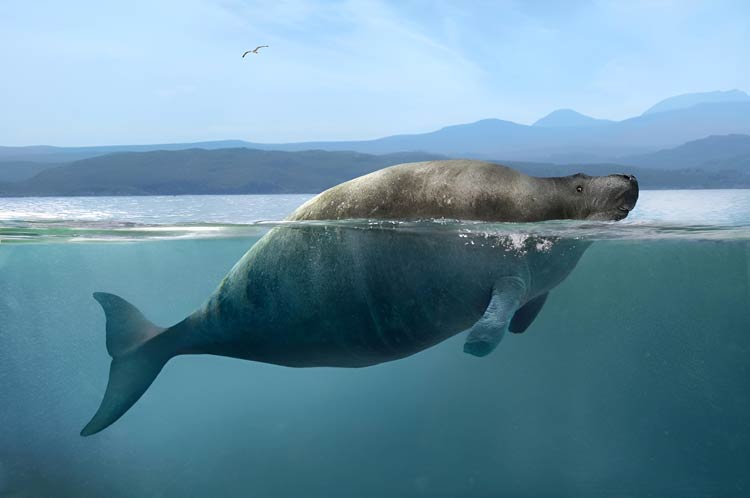
Physical characteristics
Steller’s sea cow was a large marine mammal that belonged to the order Sirenia, a group of mammals that also includes dugongs and manatees. It was the largest species of Sirenian and could grow up to 30 feet in length and weigh as much as 8 tons.
It had thick, dark-brown skin, which was covered in small, stiff hairs. Its head was small, with a pair of small eyes and ears. The sea cow had two front flippers, which were used for steering and grasping, and a broad, flat tail that it used for propulsion.
The sea cow had a small dorsal fin, located towards the tail and a pair of pectoral fins located towards the front of the body. It had a pair of small, round eyes that were located on the top of its head, and a pair of small ears that were located behind its eyes.
The sea cow’s most distinctive feature was its large, prehensile upper lip. This lip was split into two parts and could be used to gather and eat kelp. The sea cow had a total of eight teeth, two on the upper jaw and six on the lower jaw, which were used to chew its food.
Overall, Steller’s sea cow was an unusual-looking creature, with distinct features such as a large upper lip, small head and small dorsal fin, which differ it from its closest relative, dugongs and manatees, giving it a unique appearance.
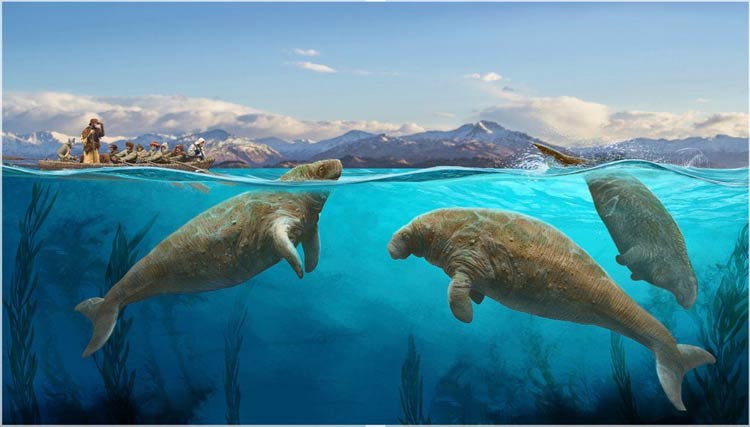
Range
Steller’s sea cow was native to the coastal waters of the North Pacific Ocean. Specifically, it was found in the area that is now known as the Bering Sea, between the Kamchatka Peninsula in Russia and the Aleutian Islands in Alaska. The sea cow had a specific habitat preference for cold waters and it is known to be common in shallow waters along the coast and around the islands, where kelp beds were abundant. It was also known to be found in the coastal lagoons and bays of the area. It was generally believed that the sea cow had a relatively small geographic range, given that it was only found in the Bering Sea and it was heavily hunted and went extinct within 27 years of being discovered.
Interactions with humans
Steller’s sea cow had no known interactions with humans prior to the arrival of Europeans in the 18th century. However, upon its discovery, the sea cow’s interactions with humans were, unfortunately, negative and ultimately resulted in the extinction of the species.
In 1741, during an expedition led by Vitus Bering, the sea cow was first discovered by Europeans. The sea cow was hunted by sailors and fur traders for its meat and for the oil in its fat. The sea cow’s slow-moving nature, docile behavior and living in shallow waters made it an easy target for hunting.
Additionally, the sea cow’s large size and relatively slow swimming speed made it an easy target for hunting, and its docile nature meant that it was not inclined to flee from approaching boats. This intense hunting pressure, combined with the sea cow’s small geographic range and slow reproduction rate, led to the rapid decline of the species.
Also, The sea cow’s habitat, Kelp beds, which is where they lived and fed, were also affected by human activities such as burning, cutting or over-harvesting of kelp. As a result of this, hunting pressure and habitat destruction, the Steller’s sea cows were hunted to extinction in 27 years after it was discovered.
This extinction was recognized as a significant loss of biodiversity and as a cautionary tale of human impact on the environment. The extinction of this unique species has been a reminder of the need to preserve biodiversity, protect endangered species and to be mindful of the impact of human activities on the environment.
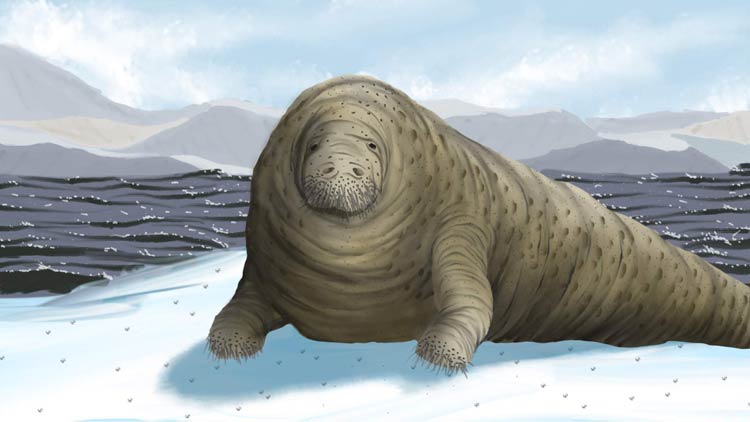
Steller’s Sea Cow Predators and Threats
Steller’s sea cow did not have any known natural predators. Its slow-moving nature and large size made it unlikely to be preyed upon by other animals. Before the arrival of Europeans, the sea cow was able to live in relative safety in its shallow coastal habitat, where it fed on abundant kelp beds.
However, the sea cow’s main threat came from human activities. Upon its discovery by Europeans in the 18th century, the sea cow was heavily hunted by sailors and fur traders for its meat and for the oil in its fat. Its slow-moving nature, docile behavior and living in shallow waters made it an easy target for hunting. The hunting pressure was intense and relentless and in combination with the sea cow’s small geographic range and slow reproduction rate, led to the rapid decline of the species.
The sea cow’s habitat, the kelp beds, were also affected by human activities such as burning, cutting or over-harvesting of kelp, this added to the threat and extermination of the species.
Overall, the Steller’s sea cow did not have any known natural predators, but human hunting and habitat destruction were the primary causes of its extinction. The extinction of this unique species has been a reminder of the impact of human activities on the environment and the need to preserve biodiversity and protect endangered species.
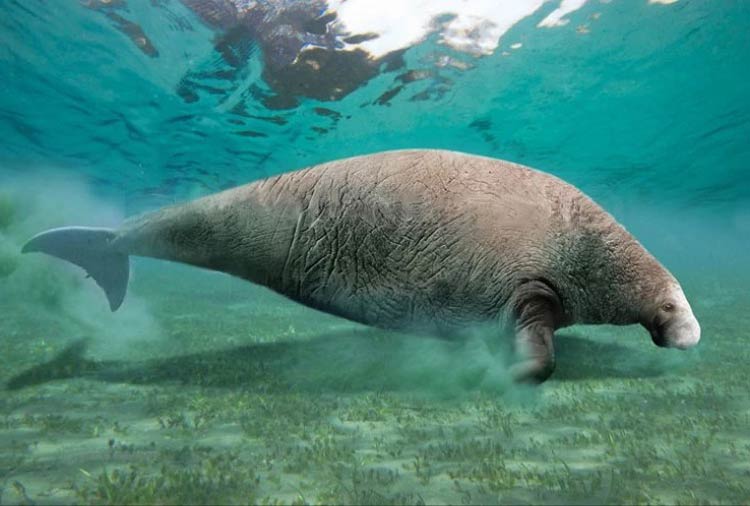
Steller’s Sea Cow Reproduction and Lifespan
The reproduction of Steller’s sea cow is not well understood as the species is now extinct. However, based on observations made during the time of its discovery, some information can be inferred:
- The sea cow was believed to have a slow reproduction rate and to have only one calf at a time.
- It was also thought to have a long gestational period, probably over a year.
- The age of maturity for the sea cow is not well-known, but it was likely around 8-10 years.
- The sea cow was a social animal that lived in small family groups, and it was observed that during hunting, the individuals were often seen swimming close to each other
- The babies at birth were likely to be relatively large, as the adult sea cow was itself a very large animal.
- The sea cow had a lifespan of around 60 years.
It’s important to note that reproduction and life-cycle information of Steller’s sea cow is largely based on inferences, speculation, and interpretation of limited historical accounts and observations. Since the species is extinct and no further studies have been made, this information should be taken with a grain of salt and considered as approximate.

Extinction of the Steller’s sea cow
Steller’s sea cow went extinct in the 18th century, just 27 years after being discovered by Europeans. The primary cause of its extinction was hunting by sailors and fur traders for its meat and for the oil in its fat. The sea cow’s slow-moving nature, docile behavior and living in shallow waters made it an easy target for hunting. Additionally, The sea cow’s habitat, Kelp beds, which is where they lived and fed, were also affected by human activities such as burning, cutting or over-harvesting of kelp.
The sea cow’s small geographic range and slow reproduction rate made it particularly vulnerable to hunting pressure. In addition, its docile nature made it less inclined to flee from approaching boats, further increasing its vulnerability.
Other factors that contributed to its extinction were the destruction of its habitat by humans, especially by clearing of kelp beds, and its slow reproduction rate. With a long gestational period, probably over a year, it made it difficult for the population to recover from hunting pressure.
The Steller’s sea cow extinction occurred at a time when little was known about conservation biology, wildlife management and the concept of biodiversity. The extinction of this unique species has been a reminder of the need to preserve biodiversity, protect endangered species and to be mindful of the impact of human activities on the environment.
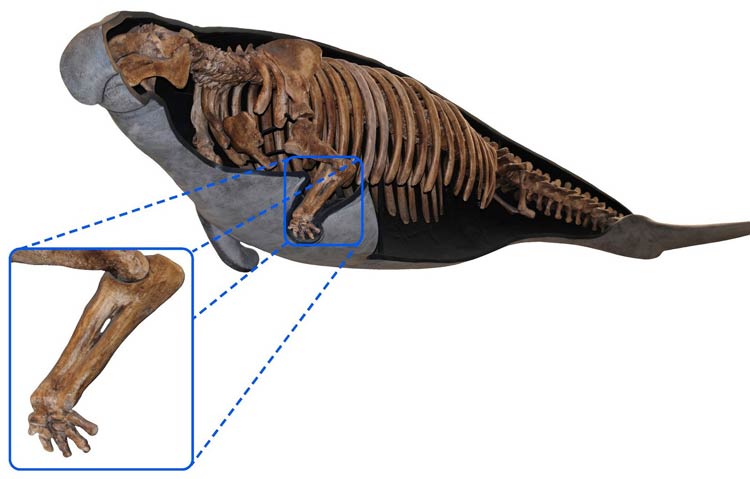
Later reported sightings
After the extinction of Steller’s sea cow in the 18th century, there have been no confirmed reports of sightings of the species. The species is considered to be extinct, and there is no concrete evidence to suggest that any individuals of the species still survive.
However, there have been some unconfirmed reports of sightings of sea cows in the North Pacific Ocean in the years following the species’ extinction, but these reports are considered to be highly unlikely and are generally not taken seriously by scientists. There were accounts and stories of native peoples who were living in the area where the sea cows existed, but those stories were passed from generation to generation, so it is hard to confirm the accuracy of such reports.
It is important to note that sea cows are often mistaken for other similar marine mammals such as the dugong, or even the manatee, which is sometimes found in the Bering Sea. So, most likely any reported sightings are of other species, not the extinct Steller’s sea cow.
The Steller’s sea cow is considered to be extinct and it is unlikely that any individuals of the species still survive. The extinction of this unique species is a reminder of the impact of human activities on the environment and the need to preserve biodiversity and protect endangered species.
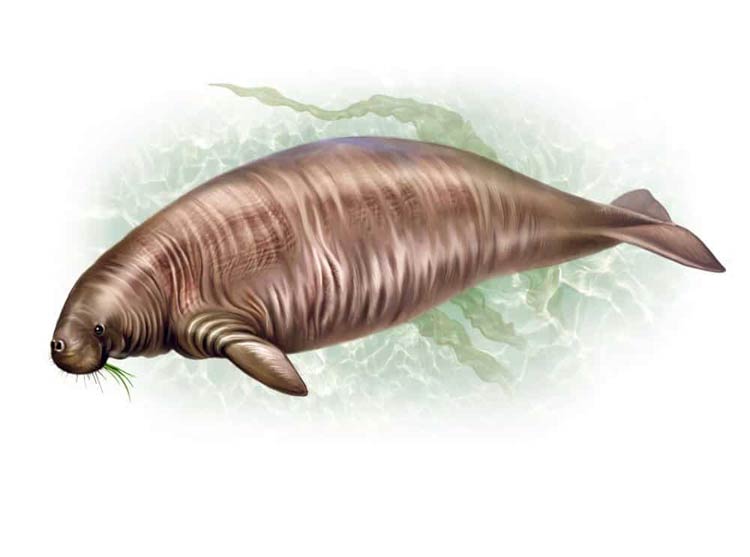
Steller’s sea cow in culture
Steller’s sea cow has played a minor role in various cultures, but it is mostly known in the context of scientific and historical literature. The discovery of the sea cow by Europeans in the 18th century was an important event in the history of zoology and it was described by Georg Wilhelm Steller, a naturalist and physician, who accompanied Vitus Bering on his 1741 expedition.
In Russia, the sea cow is a part of their cultural history, as it was hunted extensively by Russian fur traders, and its extinction is considered a significant loss of biodiversity.
In Alaska, where the sea cow’s habitat was, it is also considered as a significant cultural heritage, it plays a role in the oral tradition of the native peoples. The native Tlingit people of Alaska had a legend of a huge mammal that lived in the sea and was hunted to extinction by the ancestors of the Tlingit.
In general, the Steller’s sea cow played a small role in popular culture, but it’s mainly remembered in scientific and historical literature as a cautionary tale of human impact on the environment, and the importance of preserving biodiversity and protecting endangered species.
It is an interesting animal that once existed and now lost forever, its tragic extinction is a reminder of the impact of human activities on the environment.
Detailed data / size
Steller’s sea cow (Hydrodamalis gigas)
- Length: 8 to 9 m (26 to 30 ft)
- Weight: 8–10 tons
- Lifespan:
- on average: 60 years
- up to 80 years
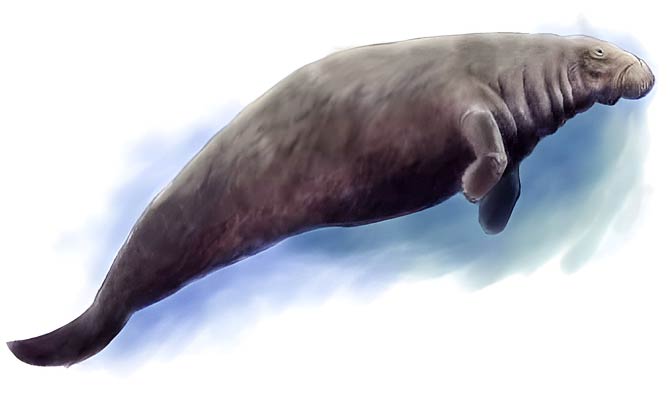
Interesting facts
- The Steller’s sea cow was the largest known species of Sirenian, reaching up to 30 feet in length and weighing as much as 10 tons.
- Its skin was 2-3 inches thick, making it resistant to harpoons and bullets.
- The Steller’s sea cow was one of the few marine mammals that lived exclusively in cold water, tolerating water temperatures as low as 4°C.
- It was the only species in its genus, Hydrodamalis, and it is the only species that have gone extinct among the Sirenians (manatees, dugongs, and sea cows) in recent times
- The sea cow was believed to have a life span of around 60 years, a slow reproduction rate and having only one calf at a time, as well as a long gestational period of probably over a year.
- The sea cow’s vocalization was low-pitched and known to carry far under water.
- The sea cow’s oil was considered to be of high quality and it was used for lighting, as well as in the manufacture of soap.
- The sea cow’s extinction was one of the first recorded instances of human-induced extinction of a mammal species.
- Because of its extinction, the sea cow played a major role in the development of conservation biology and wildlife management.
- Steller’s sea cow is one of the few extinct marine mammals that has been described in detail, as a result of the detailed observations made by Georg Wilhelm Steller, a naturalist, who was the first to describe it and named it.
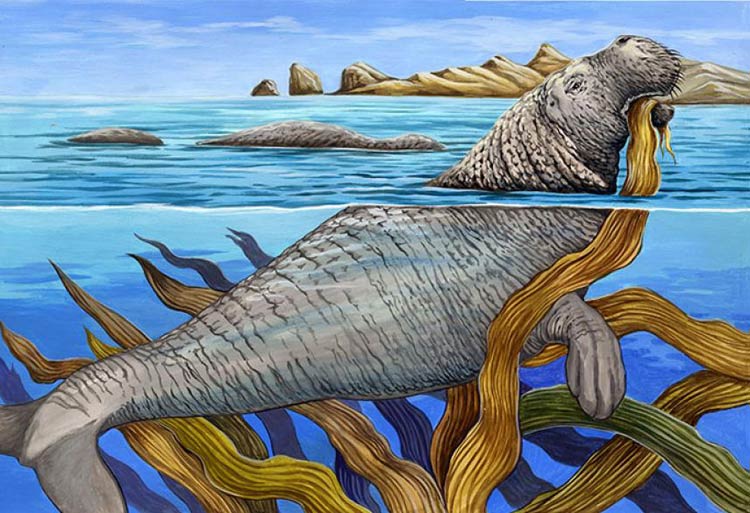
Recommended
- Megafauna
- Mammoth
- Stegodon
- Mastodon
- Platybelodon
- Indricotherium
- Cave bear
- Short-faced bear
- American lion
- European cave lion
- Smilodon – Saber-toothed tiger

